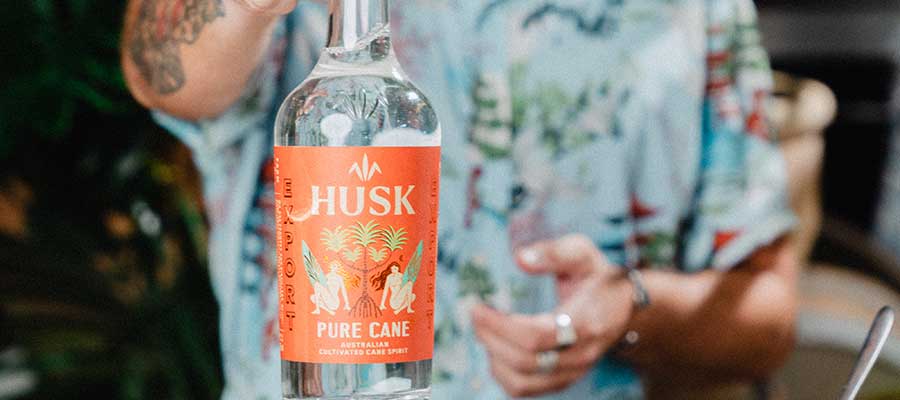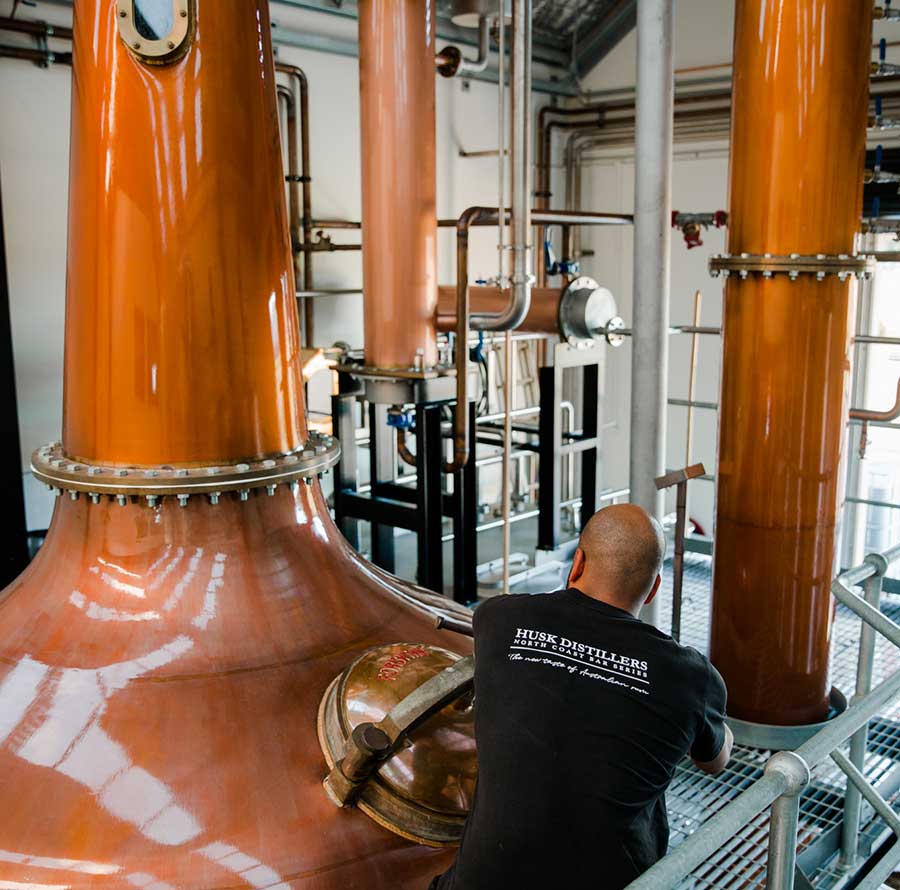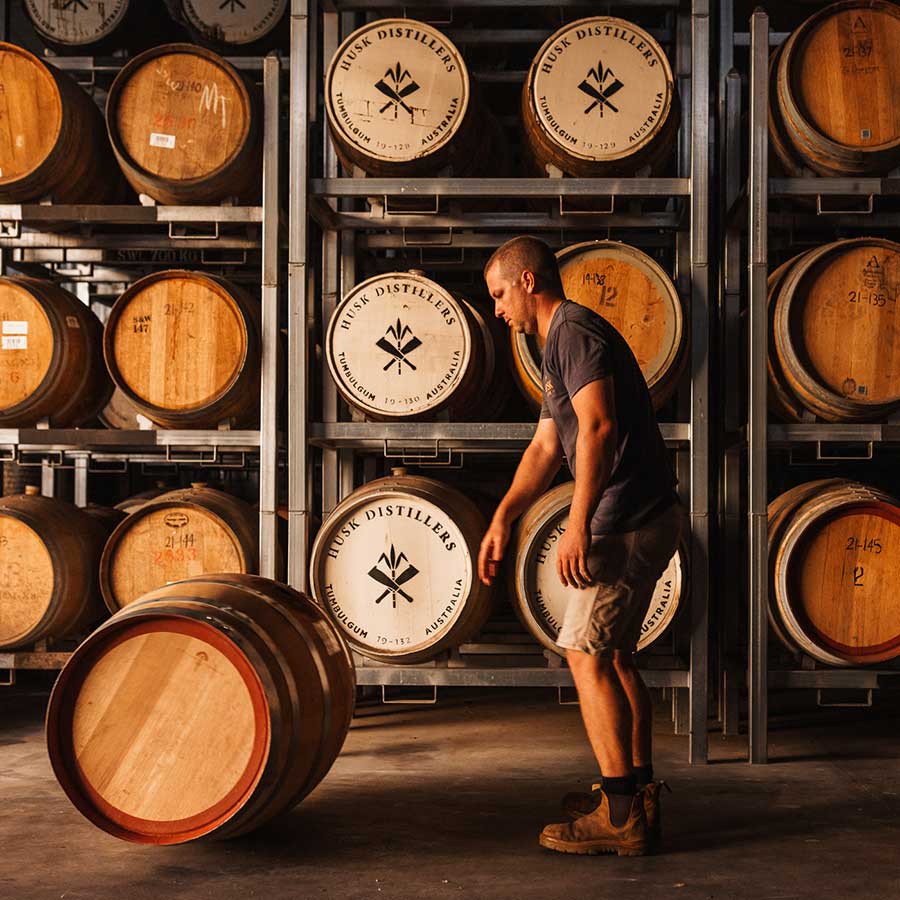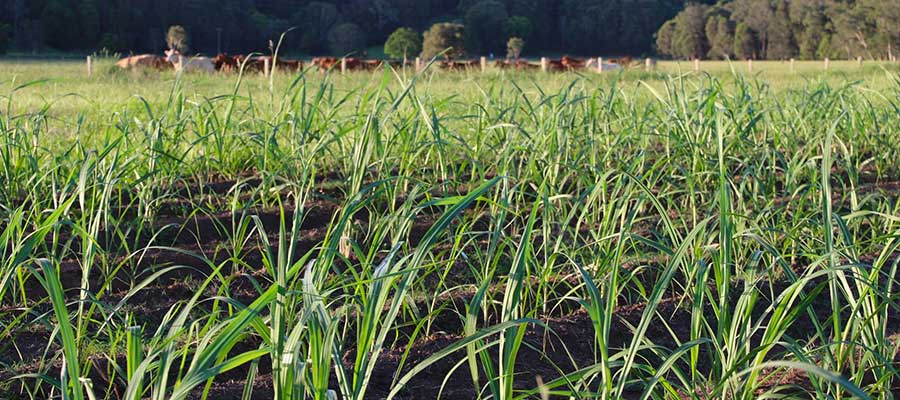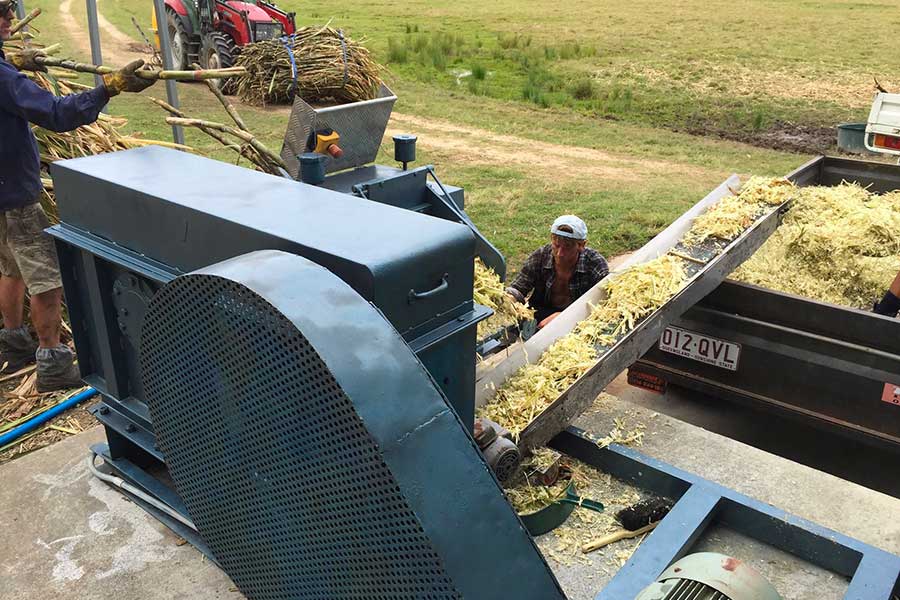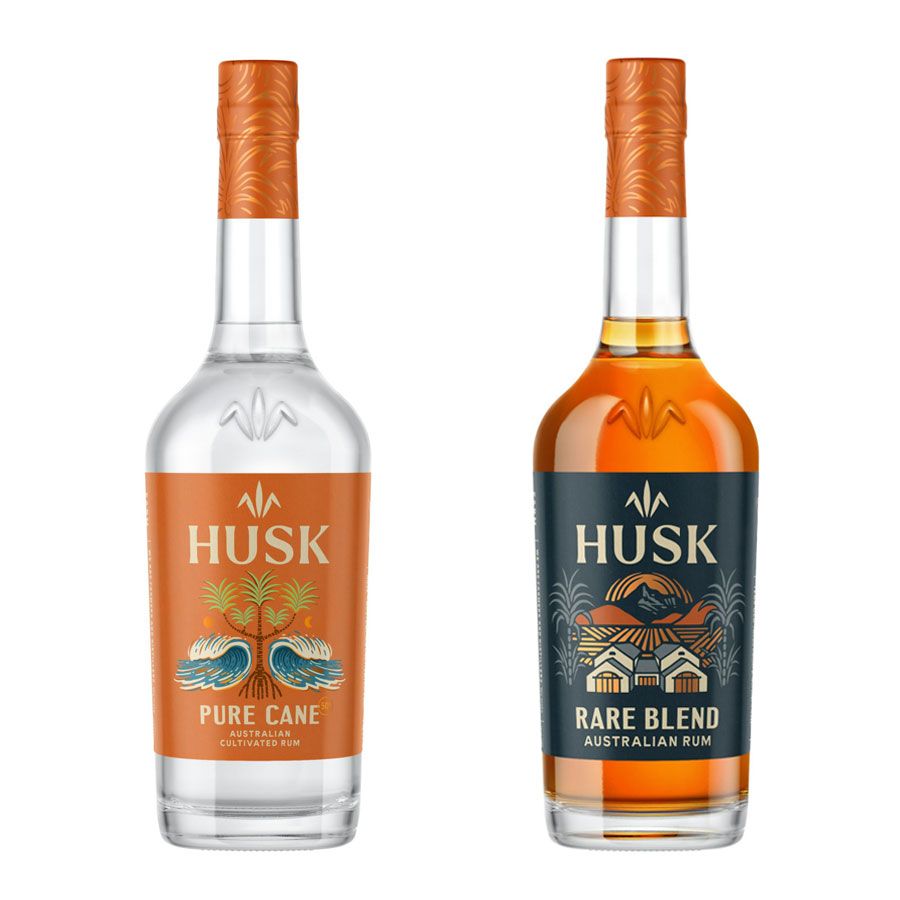Husk offers a different take on pure cane juice rums. And the good news is that two of their vintages are available in France!
I’d like to know more about you, who you are, how you came up with the idea of opening a distillery and producing rum.
I set up Husk Distillers in 2012 with my wife Mandaley, who is the finance director. I worked in the exploration and mining industry for over 20 years. Then I decided it was time to return to the surf beaches and sugar cane fields of where I grew up and start a new project.
In 1998, I read about a surveyor in Tasmania who retired and started making whisky. At the time, I was working in the goldfields of Western Australia, and I found the idea of making fine spirits from agricultural produce quite romantic.
I visited this whisky distillery and decided that one day I would build my own. Years went by and, in 2009, I was sailing with my family through the Caribbean and I was captivated by the rums of Martinique. Having grown up in south-east Queensland, where sugar cane has always been part of the landscape, I wondered why this type of rum wasn’t made back home.
So it was there, on Martinique’s rugged north coast, that my distiller’s dream became clearer and turned to the idea of creating a new style of Australian rum, using freshly milled juice from local cane varieties.
Today we have 50 employees covering production, sales, farm/grounds, cellar and restaurant. We have three grown-up daughters, Harriet, Edwina and Claudia. Harriet is general manager of marketing and hospitality, and her sisters have both worked for Husk over the years and plan to do so again later this year.
Tell us a little about the region, the climate, the terroir, the varieties of cane used…
Husk is located in the far north of New South Wales, about 80 km south of Australia’s oldest rum distillery, Beenleigh. The geology and landscape of the region is dominated by Mt Warning/Woolumbin, the eroded core of the extinct Tweed Shield volcano, which rises 1257m above the coastal plain.
Mt Warning is surrounded by an erosive caldera, the deepest in the southern hemisphere, and the remaining flanks of the volcano extend more than 50km from the central core. The summit of the mountain is also the first part of the Australian continent to be touched by the sun’s rays each day and has spiritual significance for both indigenous and non-indigenous peoples.
Our subtropical climate is influenced by the juxtaposition of the huge Pacific basin to the east and the arid interior of the immense Australian continent to the west. The interaction between cool, moist air masses from the south-east and dry, warm air from the interior influences large-scale atmospheric forces to establish cyclical weather patterns.
These are generally characterised by several dry years of below-average precipitation, followed by years of above-average precipitation and prolonged wet conditions. In 2020, we have moved from a long dry phase of the cycle to the current wet phase, with annual precipitation of 2.5 to 3 m in recent years, compared with 1 m or less in previous dry years.
Over millions of years, these geological and climatic forces have created the fabric of our terroir. This terroir influences the character of the rum we produce from our mineral-rich soils, the varieties of cane we grow, the months we harvest and the ambient ripening conditions which result in an evaporation loss of around 4.5% per year and no appreciable change in ABV strength.
Of course, ripening is also influenced by the seasons, with mild to cool, generally dry winters that have around 10 hours of daylight followed by hot, humid summers with up to 14 hours of daylight. But terroir is just one of the factors that influence the character of our rum.
I prefer to talk about provenance, which includes the terroir of a place, but above all also human factors, such as commercial and agricultural history, cultural factors and lifestyle. For us, provenance is synonymous with place and people.
How is sugar cane harvested?
Without the existence of a vibrant local sugar industry developed over the last 160 years, we wouldn’t be making rum here. Another aspect of the human side of where we come from is that Australia has always suffered from high labour costs.
This resulted in decades of research and experimentation into the mechanisation of sugar cane harvesting in the early years of the 20th century. This led to the complete mechanisation of the Australian sugar cane industry in the 1960s and 1970s and the export of this technology around the world.
As a result, we now have access to cheap, second-hand harvesting machinery and the skills to maintain that machinery. Without this, we would not be able to viably produce rum from freshly milled cane juice at Husk.
To illustrate this point, a new commercial cane harvester will cost around $900,000. We paid $40,000 for a 27-year-old Austoft combine in 2018 and, after seven seasons at Husk, that machine is still going strong, albeit with a lot of maintenance work over the years.
Australia is a great wine country, is there any connection between viticulture and Husk?
Other aspects of provenance that influence the character of our rum include our relationship with South Australia’s vibrant wine industry. We work with cooperage AP John to source 300-litre casks, which are generally sourced from Penfolds and typically hold vintages of 13-14% ABV wine for five to six years.
At the end of their use in the wine industry, our coopers scrape and char the staves, and we fill them with fresh 65% ABV rum spirit. These are very high quality casks and, due to the higher extraction rates of high proof rum spirit, they are very similar to new casks, allowing us to fill them several times to achieve different expressions.
What varieties of cane and yeast do you use?
One final aspect of provenance is still a work in progress. We have been working with other distillers and our yeast supplier to develop a new strain of yeast derived from our local sugar cane.
We will be testing this yeast in the next harvest and look forward to tasting the results of this work. In terms of cane varieties, we have chosen two commercial varieties that have been bred in Queensland by Sugar Research Australia. These varieties offer all the characteristics we were looking for and are regularly preferred by wholesalers in the fresh cane juice market for the drinking quality of their juice.
However, in 2016 we acquired a noble cane cultivar known as Badila and planted 20 stalks at Husk. Each year for the next 4 years, we cut the stalks and replanted them until, in 2020, we have enough Badilla for a small batch of rum.
We filled a 12,000-litre fermenter with Badilla juice and a second fermenter with juice from the commercial cultivar Q208. The commercial cane varieties are genetically similar, so there is not much variation in taste. However, Badilla, which was derived from Papua New Guinea in the 19th century and grown commercially in the Tweed Valley until the middle of the last century, is genetically distinct.
Its skin is dark purple, almost black. The juice is an unattractive dirty brown. The smell and taste of the juice, which is quite nutty, are distinct and the puffed aromas from each of the two fermenters were entirely different. We carried out two cycles of leaf removal for each fermenter, then combined the low wine from the two cultivars in a final cycle of spirits.
We crushed Badilla again the following year in 2021, but, unfortunately, the ratoon did not survive the great flood of 2022, and, as a result, these are the only two batches we have of this rare rum. The first batch will have matured for 5 years in December, and the second batch will be four years old. We will continue to monitor the progress of both batches and decide on a future release when the time comes.
Why this decision to produce pure cane juice rums when Australia is better known for its molasses rums?
It’s true that before we launched our first pure aged juice rum in 2015, no one had ever made this type of rum in Australia. But when we started crushing sugar cane at Husk in 2012, I was motivated by a desire to introduce Australians to a new and different style of rum and create a unique expression.
It was never easy to change such a cultural preference for molasses rums and, today, the market is still dominated by molasses, with juice rums accounting for <<1% of the market. Husk dominates this part of the market with annual sales of around 3,000 9-litre cases. But interest in French-style rum is growing and today St James, HSE, Clément, Rhum JM as well as Pere Labat and Chalong Bay are all available in the major Australian liquor chains.
What is the rum production process?
We use a custom-built mill that we designed with Marco Fatore from Interunion in Brazil. It was installed in 2022, but the River Tweed burst its banks and 1.6m of water flooded the mill building. The two mills, the gearboxes and the main motors, including the 75 kW grinding motor, were already installed on their concrete bases above this level and were spared, but all the pumps, and all the other gearboxes, motors and nuts and bolts were submerged in the muddy river water.
Fortunately, the VSD panel housing all the electrical controls and measuring 4 m x 600 mm x 2.2 m in height was still in its crate and was so well packed that it floated around the building above the flood water and eventually landed on the ground unscathed.
And outside the flood period?
The flood set us back, but we fully recovered every component and completed construction in time to successfully commission the mill for the start of the 2022 harvest.
The mill has a nominal capacity of 10 tonnes per hour. Since we made a number of efficiency improvements in 2024, we run the mill for around 5 hours every Thursday during harvest, crushing between 35 and 40 tonnes of cane to fill 3 x 12,000 litre fermenters.
Fermentation lasts 4 days. We carry out double pot distillation using a single 6,000-litre copper still to produce the bulk of our rums. These rums come out of the column at around 77% ABV. We also use a single-pass hybrid pot-column distillation with a 7.5 m high, 500 mm diameter rectification column for some of our expressions.
This produces a distillate of around 90% ABV. The rum is reduced to 65% ABV and aged mainly in 300-litre ex-Australian wine hogsheads that have been scraped and charred, mainly in American oak. We also use a small number of French oak and ex-bourbon barrels. We have around 1,200 barrels in our ageing cellar.
The subtropical climate of our region plays an important role in our ageing process. Variations in temperature, with hot summers and cooler winters, including often significant daily temperature changes of around 20°C in winter, cause the rum inside the barrels to expand and contract. This intensifies the interaction between the rum and the wood, accelerating the development of the flavours.
How would you describe your rums?
Although they share characteristics with agricultural rums made in the French West Indies, our rums are typically Australian and reflect our provenance. Our unaged white rums are light with fresh notes of sugar cane, pastry notes, delicate flowers and honeyed fruit, briny with a subtle finish of liquorice and pepper.
Our aged rums, made from 100% cane juice, are woody and complemented by fruity notes, cooked spices and a lingering finish of leather and tobacco leaves.
You mentioned flooding, how are you affected by climate change?
In Australia, sugar cane growing areas are mainly located along flood plains that are subject to regular flooding, and Tweed is no different. The main climatic events that affect us are drought and floods.
In the fourteen years since our distillery was founded, we have been hit by floods three times and have experienced a number of dry spells, but no severe, prolonged drought. The flood in 2022 was particularly devastating, but we were able to restart operations and open our cellar door after only two weeks of cleaning, so I think we’re pretty resilient.
At the time of writing we have again recovered from a severe weather event, this time a cyclone moved much further south than normal and crossed the coast just north of us in southern Queensland. There was a lot of wind and rain, our paddocks were flooded and a number of trees were felled, but there was no damage and our buildings remained high and dry, so we were very lucky.
Of course, floodplains are created by regular flooding over millions of years, and continuous flooding ensures that the soil is replenished and remains rich in nutrients. This is part of the dynamic vitality of our place in the world.
We built our distillery here because it’s a good place to grow sugar cane, but we have to take the good with the bad. The Tweed Valley has a very long history of flooding, so I can’t say we’ve been particularly affected by climate change, but I’m looking forward to a few drier years, hopefully soon.
The vintages :
Husk – Pure Cane is a Single Estate rum made from 100% pure cane juice using a hybrid pot/column still. The flavours are fresh cane, white flowers and liquorice. A real change from the agricultural rums of the West Indies, it’s a great success and a pleasure to try in a ti punch.
70 cl – 50 cl – around €45
Husk Rare Blend: this is a particularly original rum, a blend of cane honey brandy (80%) and pure cane juice (20%), aged in casks that have previously contained an Australian wine from Penfold. Round and smooth, with aromas of caramel, vanilla and ripe fruit. We’d like a little more punch.
70 cl – 40% – around €50

